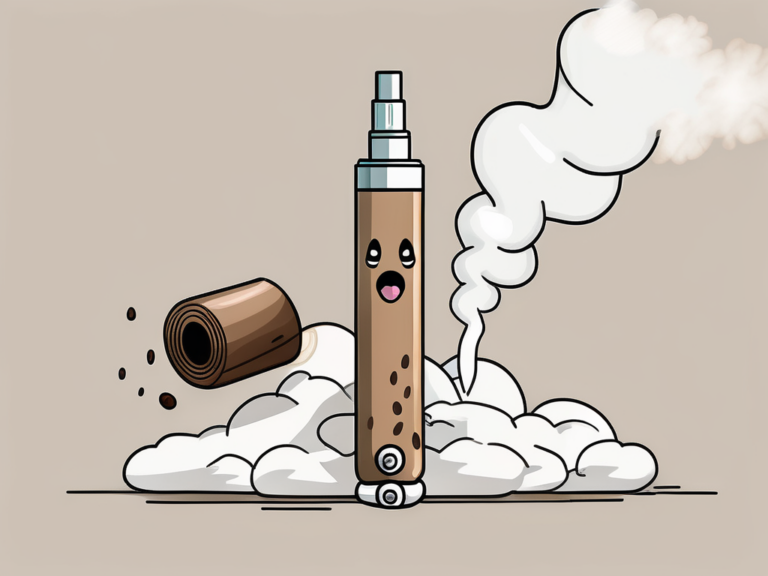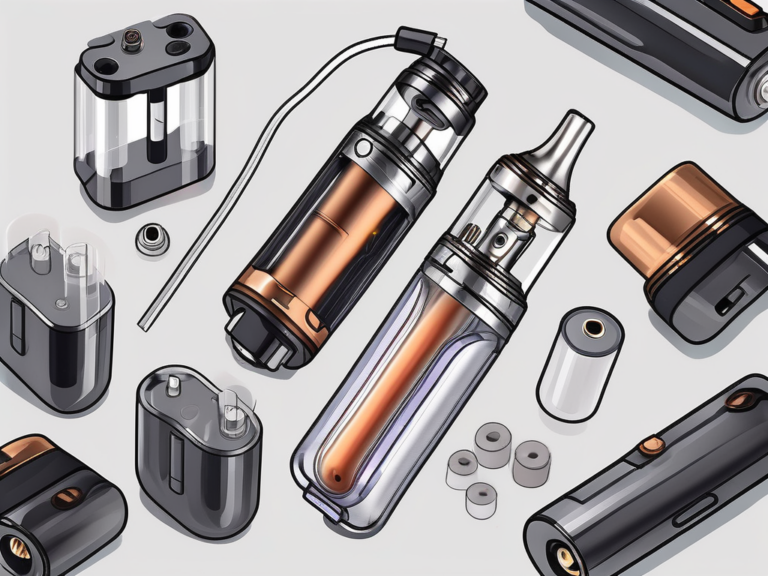what year were vapes invented
In recent years, vaping has gained immense popularity as an alternative to traditional smoking. This phenomenon has sparked curiosity among many, leading them to wonder about the origins of these handheld devices. So, let’s delve into the history of vaping and explore when vapes were first invented.
The Origins of Vaping
Before we can answer the question of when vapes were invented, we need to understand the concept behind vaping itself. Vaping, in essence, involves inhaling and exhaling vapor produced by an electronic device commonly known as an e-cigarette or vape.
Vaping has evolved from a niche hobby to a global phenomenon, with a diverse range of devices and e-liquids available to consumers. The act of vaping has become a lifestyle choice for many, with enthusiasts exploring new flavors, customizing their devices, and even participating in vape competitions.
The First Concept of E-Cigarettes
The idea of an electronic cigarette was first conceived in the 1960s by Herbert A. Gilbert, an American inventor. Gilbert was ahead of his time, envisioning a device that could deliver nicotine without the harmful effects of traditional combustion-based smoking. However, his invention did not gain much traction at the time.
Despite the initial lack of interest in Gilbert’s invention, his concept laid the foundation for future advancements in vaping technology. The potential for a smoke-free alternative to traditional cigarettes sparked curiosity among inventors and researchers, leading to further innovations in the field of vaping.
The Inventor Behind the First Vape
Fast forward to the early 2000s, and we have Hon Lik, a Chinese pharmacist, to thank for revolutionizing the world of vaping. In 2003, Lik succeeded in creating the first commercially viable e-cigarette. His motivation stemmed from personal experience, as he sought to develop an alternative to traditional smoking after losing his father to lung cancer.
Lik’s invention marked a significant milestone in the history of vaping, paving the way for the modern e-cigarette industry. The widespread adoption of e-cigarettes as a smoking cessation aid and a recreational activity has transformed the way people perceive nicotine consumption. Vaping has become a cultural phenomenon, with communities forming around shared interests in technology, flavor experimentation, and harm reduction.
The Evolution of Vaping Devices
With the foundation laid by Lik’s invention, the development of vaping devices rapidly progressed. Let’s take a closer look at how early models paved the way for the technologically advanced devices we have today.
As vaping continued to evolve, the industry saw a shift in design and functionality that revolutionized the way people approached vaping. The early models, often referred to as cigalikes, mimicked the size and shape of traditional cigarettes. These first-generation e-cigarettes were a stepping stone towards the sleek and innovative devices we see today.
Early Models and Designs
Initially, e-cigarettes resembled traditional tobacco cigarettes in terms of shape and size. These early models, known as first-generation e-cigarettes, were simple devices that consisted of a battery, an atomizer, and a cartridge filled with e-liquid. However, these devices lacked the sophistication and customizability of their modern counterparts.
With the growing demand for more advanced features, manufacturers began to explore new possibilities in design and functionality. This led to the emergence of second and third-generation devices that offered enhanced performance and user control. Vapers now had the ability to fine-tune their experience by adjusting settings such as voltage and temperature, paving the way for a more personalized vaping journey.
Technological Advancements in Vaping
Advancements in technology brought forth groundbreaking innovations in vaping. From the introduction of variable wattage devices to the development of sub-ohm vaping, the options available to vapers drastically increased.
One significant leap in technology was the advent of pod systems, compact and user-friendly devices that utilize pre-filled or refillable pods. These devices have become increasingly popular among new vapers due to their simplicity and portability.
Furthermore, the integration of temperature control technology has allowed vapers to fine-tune their experience by regulating the temperature at which their coils operate. This not only provides a more consistent vaping experience but also helps prevent dry hits and burnt coils, enhancing the overall enjoyment of vaping.
The Commercialization of Vapes
After the invention of the e-cigarette, it didn’t take long for vaping to enter the commercial market and gain widespread popularity. Let’s explore the key milestones that brought vapes from invention to mainstream success.
The First Vape on the Market
In 2004, the first e-cigarette hit the market in China. Its release marked a turning point, as vaping products became readily accessible to the public. The initial response was mixed, with skepticism prevailing among many. However, as more individuals discovered the potential benefits of vaping over traditional smoking, the industry began to gain momentum.
The Rise of Vape Brands
As the demand for vaping devices increased, numerous brands emerged to cater to this growing market. These brands not only diversified the types of devices available but also introduced a wide array of e-liquids with various flavors and nicotine strengths.
With relentless innovation and competition, the industry saw the rise of established brands that dominate the vaping market today. These brands continually push the boundaries of design, functionality, and flavor to meet the ever-evolving demands of vapers.
Moreover, the commercialization of vapes led to the development of vape culture, a community of enthusiasts who share a passion for vaping. Vape shops and lounges began popping up in cities worldwide, providing a space for vapers to connect, exchange tips, and try new products. This sense of community further fueled the growth of the industry, creating a dedicated following that transcends borders and demographics.
Additionally, the commercial success of vapes has sparked debates around regulation and public health. Concerns have been raised about the impact of vaping on youth, leading to calls for stricter regulations on marketing and sales to prevent underage use. Health experts continue to study the long-term effects of vaping on individuals’ well-being, highlighting the need for comprehensive research to inform public policy and consumer choices.
The Impact of Vaping on Society
Vaping has had a significant impact on society, influencing not only smoking habits but also raising questions and concerns. Let’s examine how vaping has catalyzed changes in societal norms and sparked debates surrounding its use.
One of the key aspects of vaping that has shaped societal attitudes is its role in harm reduction and smoking cessation. Vaping devices offer smokers a potentially less harmful alternative to traditional cigarettes, with some studies suggesting that vaping is an effective tool for smoking cessation. This shift in perception has led to a cultural reevaluation of smoking, with vaping being seen as a more socially acceptable behavior in many circles.
The Shift from Traditional Smoking to Vaping
Vaping has been instrumental in promoting a shift away from conventional smoking. Many smokers have turned to vaping as a means to gradually reduce their nicotine intake or even quit smoking altogether. The potential harm reduction associated with vaping has made it an attractive option for those looking to break free from the grip of cigarettes.
Furthermore, the emergence of vaping subcultures and communities has added a new dimension to the social impact of vaping. Vape shops, online forums, and social media groups have become hubs for enthusiasts to share experiences, discuss new products, and advocate for vaping rights. This sense of community has fostered a unique identity around vaping, further solidifying its place in contemporary society.
Controversies and Health Concerns
While vaping has gained popularity, it has not been without controversies and health concerns. The debate surrounding the long-term effects of vaping on health remains ongoing. It is crucial to recognize that vaping, although considered less harmful than traditional smoking, is not risk-free. Responsible use and thorough research are essential for anyone considering vaping.
As the landscape of vaping continues to evolve, so too do the discussions surrounding its societal impact. It is clear that vaping has become a significant cultural phenomenon, influencing not just individual behaviors but also broader social norms and public health policies. Understanding the multifaceted nature of vaping’s impact on society is essential for navigating the complex terrain of tobacco harm reduction and smoking cessation efforts.
The Future of Vaping
As we look ahead, it is clear that vaping will continue to evolve and shape the landscape of smoking alternatives. Let’s explore what the future holds for vaping in terms of technological advancements and regulatory changes.
Innovations and Trends in Vaping
The vaping industry shows no signs of slowing down when it comes to innovation. We can expect developments such as improved battery technology, more efficient heating elements, and enhanced flavor delivery systems. Additionally, new trends, such as the integration of artificial intelligence and smart features, may revolutionize the vaping experience.
Regulatory Changes and Their Implications
Governments around the world have grappled with the task of regulating the vaping industry. As vaping gains more attention, various countries have implemented regulations to protect consumers, particularly youth, from the potential risks associated with vaping. These regulations range from age restrictions to product quality controls.
It is vital for vapers and non-vapers alike to stay informed about ongoing research and regulatory updates. Moreover, practicing responsible vaping habits and respecting the rules put in place plays a crucial role in the safe and sustainable growth of the vaping industry.
In conclusion, the invention of vapes can be traced back to the early 2000s, with Hon Lik’s introduction of the first commercially viable e-cigarette. Since then, vaping has undergone substantial advancements, revolutionizing the smoking alternative market. As the industry continues to evolve, it is imperative to strike a balance between innovation, responsible use, and informed regulation to ensure the long-term viability and safety of vaping.






